#Hindu wedding rituals
Explore tagged Tumblr posts
Text
Learn the significance of Hindu weddings and traditions that may bring you good fortune on your wedding day. For ideas and trends, stay tuned to ShaadiWish
#Hindu Marriage#Hindu marriages#Hindu Wedding#Hindu wedding ceremony#Hindu wedding customs#Hindu Wedding Rituals#Hindu Wedding Significance#Hindu wedding traditions#Hindu Weddings#shaadiwish
3 notes
·
View notes
Text
#Traditional Indian wedding rituals#Indian wedding customs#Saat Phere#Kanyadaan#Indian wedding traditions#Wedding ceremonies#Hindu wedding rituals#Cultural wedding traditions#Indian marriage rituals#Wedding customs in India#Traditional wedding ceremonies#Rituals in Indian weddings#Indian wedding culture.
0 notes
Text
Perform Haldi Ceremony in India
Curious about the Haldi Ceremony? You’re in the right place! Vaikunth provides experienced pandits to make your Haldi Ceremony truly special. This cherished tradition involves applying turmeric paste to the bride and groom, symbolizing purity and beauty. Let Vaikunth help make your celebration memorable and meaningful.

0 notes
Text
The Ultimate List of Indian Wedding Functions - Celebrating Love with Tradition and Style
Indian weddings are known for their grandeur, vibrant colors, and rich cultural traditions. They are a beautiful blend of rituals and celebrations that span over several days, making them an unforgettable experience for the bride, groom, and their families. In this blog, we’ll provide you with a comprehensive list of marriage functions that typically take place during an Indian wedding,…
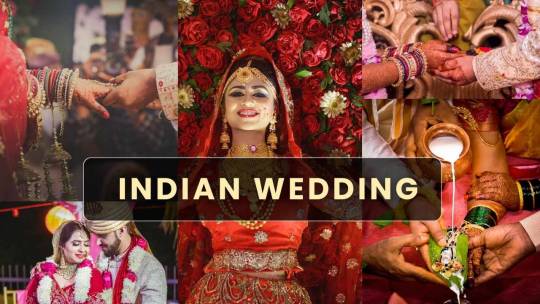
View On WordPress
0 notes
Text
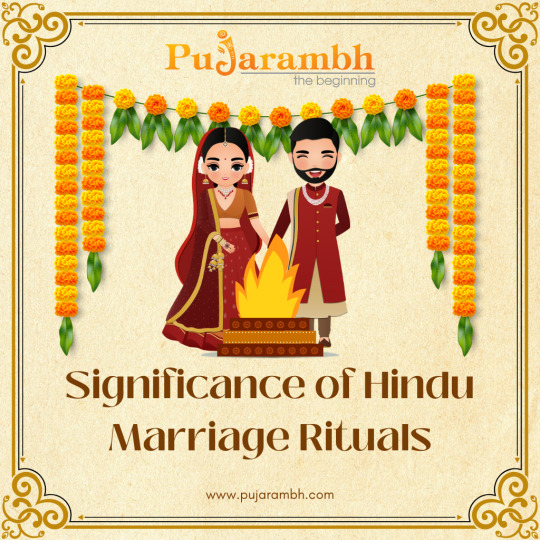
There are lots of traditions and rituals followed during the Hindu Wedding Ceremony. Consultation with a wedding pandit helps in organizing the ceremony in a hassle-free manner.
#hindu marriage vidhi#hindu marriage rituals#hindu marriage vows#hindu marriage rules#marriage pooja samagri list#book pandit for marriage#hindu pandit for wedding#marriage pandit near me#marriage vidhi items#kundali matching for marriage#marriage muhurat in 2023#marriage puja list#wedding puja samagri
1 note
·
View note
Note
Happy Diwali 🎇 and thanks for all the nice headcanons about lads
can i please please request some Diwali headcanons with lads boys pretty plase 🥹 lov u
Happy Diwali to you too anon 🥰
tho i’m kinda busy at home, i’ll write a few HCs for you ♡

Celebrating Diwali with LADS Men
some love and deepspace x Desi! Reader headcanons

Cleaning and Decorations with Xavier
-> Cleaning up the house during Diwali signifies letting go of the old (past) and bringing in/welcoming the new. Whereas decorative lights represent the triumph of light over darkness; victory of good over evil.
You tell Xavier about this desi tradition and the next morning he's at your door at 7 am sharp with all the cleaning supplies. He helps you clean up, declutter and even get rid of certain things you don't need anymore but keep hoarding for no reason 😭
Xavier will also love joining you in crafting lanterns, as well as buying decorative items because he gets to spend more time with you 🥺. He'll help you hang the decorative pieces at all the high places, and definitely enjoy setting up all the lights ✨. IT'S HIS FAVORITE PART ABOUT THIS FESTIVAL. He'll help place the diyas (🪔) all over the house.

Shopping with Sylus
-> Shopping for new items such as furnishings and such is a way to bring in the new things into your lives. It's also believed that buying gold or silver during Diwali is auspicious and brings in wealth and prosperity to a family.
Sylus learns about this custom and the next day, he's outside your apartment with his sportscar, inviting you to a shopping date with him. Will definitely spoil you and buy loads of gold and silver jewellery for you cause he can 😌
Will also buy you furnishings way too lavish for your liking, saying shit like “the couch in your living room is too shabby, sweetie.” May or may not ask Luke and Keiran to help replace and redecorate all the furniture in your house 😭

Making candles and sweet dishes with Zayne
-> Many people buy but many others also make their own candles and diyas (🪔) at home to decorate the house. We also make sweet dishes which vary accordingly with every region of India.
Zayne is a calm and patient person. So who better to invite for making candles and sweets than him? He'll be a very patient learner. He'll love this activity so much, mostly cause he'll get to see your cute, annoyed expressions. And his candles will definitely look better than your crooked ones 😭
ZAYNE LOVES SWEETS! He'll be kinda excited to try the Desi delicacies. He'd probably enjoy Gulab Jamun the most! And Rasmalai 😋. He may not like kaju katli or soan papri as much but he'll appreciate them all the same. Oh and he will surely like boondi ke laddu.

Rangoli and Mehendi with Rafayel
-> We make Rangolis during Diwali to welcome the Goddess Lakshmi, goddess of wealth and prosperity. It is believed that deities like houses with beautiful rangoli. Rangolis also represent the people’s joy as well as the triumph of good over evil. Whereas Mehendi (or henna art) is a tradition mostly performed by women. We love covering our hands in beautiful henna art 😍
Rafayel is an artist so of course he's gonna be most excited to indulge in the Rangoli making. His designs are gonna be the prettier than yours. He doesn't even bother looking up the simple rangoli designs on the internet. He'll directly create his own authentic and complex designs all over your house.
And he'd love Mehendi (henna art). He'd quickly learn the process of making mehendi at home. And then he'll get down to making beautiful patterns on your hands. Will definitely add lots of water symbolic designs as well as hide his name in the design 🤭 (eh-hem hiding each-other’s names in mehendi art is a hindu wedding tradition for bride and groom)

Miscellaneous HCs
♡ All of them will sincerely sit throughout the praying session. They'll help perform all the rituals.
♡ All of them will gawk at you in your pretty lehengas and sarees and kurtis and other traditional outfits you choose to wear 😊. They'll shower you with loads of compliments. Will definitely try out desi outfits for men if you ask them.
♡ They'll love trying out all the desi dishes you prepared.
♡ Xavier and Zayne will enjoy all the card games and will definitely keep beating your ass 😭
♡ They'll say no to fire crackers cause they cause pollution. Celebrate a Green Diwali y'all 😊🫶


WISHING YOU ALL A VERY HAPPY DIWALI 🪔
» MASTERLIST «
#love and deepspace#xavier x reader#zayne x reader#sylus x reader#rafayel x reader#love and deepspace xavier#love and deepspace zayne#love and deepspace sylus#love and deepspace rafayel#happy diwali#diwali#xavier love and deepspace#zayne love and deepspace#sylus love and deepspace#rafayel love and deepspace#love & deepspace#love and deepspace headcanons#love and deepspace imagine#lads xavier x reader#lads zayne x reader#lads rafayel x reader#lads sylus x reader#lads sylus#lads rafayel#lads xavier#lads zayne#lnds zayne#lnds rafayel#lnds xavier#lnds sylus
144 notes
·
View notes
Text







In the lands of ancient Armenia, Anatolia, and the Fertile Crescent, there was a pre-Islamic religion called Zoroastrianism. The supreme god of that religion, Ahura Mazda, is believed to be the very essence of fire itself. On one miraculous day when fires raged across the land, it is said that he made himself incarnate into a man named Atar. In one different offshoot of the religion, his name is instead Adar. This divine man brought the tradition of fire worship to these ancient lands when volcanoes and wildfires raged. Still today, adherents conduct rituals in where the sacrificial fire is lit and they dance around it in seven circuits, very much like the modern Hindu wedding ceremony of saptapadi intended to honor their fire-priest god Agni. One often overlooked aspect of Atar is the very nature of his incarnation. This very old account of a god being made manifest in a human body should remind us of the Abrahamic tradition of how God created Adam in its own image, and the Norse account of how Odin breathed his holy breath into Askr. And yet, here we are faced with the startling fact that the Zoroastrian account, by academic consensus, is older than these two accounts - but the possibility of it being far older cannot be ruled out. The sagas still sung of Atar today tell of his heroic deed in battling the demonic fire dragon named Aži Dahāka, and killed it. Later accounts say that he bound it, chained it up, and banished it deep within the earth. Today in Armenia, there is an extinct volcano named Azhdahak that has been named after this dragon. But in yet another account in Iran today, it is instead said that he was imprisoned in Mount Damāvand where he shall remain until the end of the world comes, and shall break free again. By then, Atar will return to vanquish him once more.
#RIP Adar#You will be missed#Adar#TROP#The Rings of Power#Rings of Power#Joseph Mawle#Sam Hazeldine#LOTR#Lord of the Rings#The Lord of the Rings#JRR Tolkien#Tolkien#mine#my edit#Mordor#fire#Atar#Zoroastrianism#Zoroastrian#ancient religion#ancient religions
54 notes
·
View notes
Text
Hello (。◕‿◕。)
Intro Post... Everything under cut
Now that I have enough things my blog is dedicated to, I am posting this introduction post hehe...

About Me:
◍ Just call me “Shaku” lmao.... T_T
◍ I'm a minor, 16 year old studying in 11th class from Kolkata
◍ Yes I am Bangali, (bati ami.. maa ghoti, baba bangal lol)
◍ A proud Slytherin 🐍
◍ Bengali literatures I have read
◍ Thakumar Jhuli fan since the day I started watching (which is as a fucking 2 and a half year old lol)
Favourite ones are - ofcourse Shakchunni, Arun Barun o Kironmala, Monimala, Shahasradal o Champakdal, Sath bhai Champa, Lal Komol o Neel Komol and everything else..
◍ Pandob Goyenda fan forever
◍ I love Chhota Bheem and Shinchan so much
◍ And I absolutely love green 💚
◍ If I could I'd become a forest witch maybe... or a blue lotus... or a snake perhaps..
◍ ornithophobic, ophiophile, selenophile and floraphile
◍ Kolkata biriyani is the best 🗿
◍ Official MohiniChanchal child (fight me if you dare deny it)
◍ Pinterest board for Hindu mythology aesthetics
About the blog:
✿ Jily playlist I made –
✿ Incorrect quotes for Chhota Bheem and Shinchan. (I only post when I get enough ideas about the quotes lol)
Chhota Bheem community invitation anyone?
✿ My OTPs — Jily, Hinny, DekiNobi, Ronmione, GiyuShino, Sanekana, Tankana, Zennezu, Inoaoi, ObaMitsu, GojoHime, ChosoYuki, BellaDolphus, VanMozhi, HashiMito, MinaKushi, Ikarishipping, DesimChiyuki and a lot more...
✿ Rp blogs I own
– @peoplecallme-netaji
– @hansome-est-godofwar
– @miss-lily-evans
– @pavbhaji-prabhakar
– @laddoo-hain-drugs-nahi
– @topper-sugi
And some more... But why reveal them 🤭
✿ “The Cult of Vasant 🌷🌸🌹🌺🌻🌼🏵️💐🥀🪷🪻”
Cult Rituals, Vasant goes ham at LakshmiNarayan wedding, Vasant and Kamdev, Vasant in Treta Yug, Vasant and Hanuman, Vasant in Dwapar Yug, Vasant urban legend lore, Vasant admirers, Vasant food choises, sun sensetive Vasant, Dance teacher Vasant, Vasant and Holi and everything Vasant
Vasant x Neto shipper all the wayyyyyyyy
✿ Yamraj appreciation, un-villainizing Indradev, defending Shri Ram, defending Draupadi, Arjun better than Karna truer, Behula and Lakhindar are my babies and many more...
✿ The Black Family is my Roman empire honestly...
✿ DADDYMON truer 🗿
— Doraemon Rp blogs
— An original Dekisugi lore, and a small fic written on it curtsey to @/nobita-ki-mummy aka @/hi-avathisside
— Doraemon moodboards
Doraemon moodboard
Nobita moodboard
Shizuka moodboard
Gian moodboard
Suneo moodboard
Dekisugi moodboard
Pippo/Judo moodboard
Riruru moodboard
✿ Mythology, Hinduism, memes, magic and anything and everything honestly...
→ Voices of the Gods part 1
→ Voices of the Gods part 2
→ Kartikeya Da Peacock Dance Master
→ Shatrughan da Ghoomar master
→ Hindu gods modern au
✿ I paint and draw... And do origami. Which I sometimes posts.. (I especially like painting sceneries and Hindu gods and goddesses)
෴ Paper flowers part 1
෴ Paper flowers part 2
෴ Other paper stuff
෴ Kartikeya with Paravani art (with og lore)
෴ Shri Hari (pencil sketch)
෴ Murlidhar (pencil sketch)
෴ silly landscape
✿ Shaku tells stories (a series of me explaining some stories with my own added commentaries)
•• Arun Barun Kiranmala
•• Shohosrodol O Chompokdol
✿ No place for homophobes, transphobes, pedophiles, racists, misogynists or any hateful people on my blog
•• Rajkumar Upendro or Montriputro Shonkor
✿ @/foreignink is my tumblr bestie... I know her irl too and I love her more than most of the things in this world... Donchu dare say anything to her 🔪
#intro post#introduction#blog intro#desiblr#desi tumblr#desi teen#desi#being bengali#bengali girl#shakchunni core
62 notes
·
View notes
Text









The Wedding
An Indian wedding is almost like a festival, the festivities and celebrations all around, create an aura of joy and excitement. In such an environment, one’s happiness knows no bounds. Exchange of gifts, greetings is a common sight at an Indian wedding, elaborate preparations are made in the terms food, fun, floral decoration etc.The bride and bridegroom are adorned with the most precious jewels and attire. The expenditure, pomp and show make it an extravagant affair. Not only the pomp and show but the whole environment at an Indian wedding is bright, colorful and grand. There are a few key rituals common in Hindu weddings – Kanyadaan, Panigrahana, and Saptapadi; these are respectively, giving away of daughter by the father, voluntarily holding hand near the fire to signify impending union, and taking seven steps before fire with each step including a set of mutual vows. After the seventh step and vows of Saptapadi, the couple is legally husband and wife.
Haldi Ceremony
Mehndi Ceremony
Sangeet Night

More Mood Board
#henry cavill#henry cavill mood board#henry cavill x y/n#henry cavill x reader#henry cavill imagine#indian wedding series#indian wedding#groom! henry cavill x bride! reader#bride and groom#lehnga#henry cavill x desi reader#desi romance#desi! reader#desi tumblr
41 notes
·
View notes
Text

Agni Dev Talon Abraxas
Agni Dev: Exploring the Sacred Fire God of Hindu Mythology
When we talk about the Hindu pantheon, one name that stands out is Agnidev, the god of fire. Agni, as he’s often called, plays a vital role in Hindu mythology and rituals. From sacrificial fires to the flames of a domestic hearth, Agni is everywhere. Let’s delve into the captivating world of Agnidev and understand his importance in Hindu culture.
The Many Faces of Agni
Agni isn’t just about the fire we see every day. He’s associated with various forms of fire, including:
The Sun: The ultimate source of light and heat. Lightning: A powerful, natural force. Comets: Celestial fireballs streaking across the sky. Sacrificial Fire: Central to Vedic rituals. Domestic Fires: The heart of every home. Funeral Pyres: Guiding souls to the afterlife. Digestive Fire: The inner energy within all living beings.
During the Vedic period (1500-500 BCE), Agni was one of the most revered deities, and the Vedas contain more hymns dedicated to him than to any other god. Even today, though not directly worshipped as much, Agni is omnipresent in various Hindu ceremonies, especially marriages and other significant rites of passage.
Agni’s Mythical Tales
Agni’s mythology is rich and varied. He is known to be the son of the Celestial Waters, symbolizing the connection between water and fire. When it rains, the fire is believed to descend to earth, only to rise again through vegetation. This cycle is a beautiful representation of the balance in nature.
One of the fascinating tales involves Agni’s reluctance to take on the duty of carrying offerings to the gods, fearing the same fate as his three brothers who perished while performing the task. To escape this duty, Agni hid in various places but was eventually discovered each time by different creatures. His final refuge, a sami tree, became sacred in Hindu rituals, with its sticks used to kindle fires. Despite his initial reluctance, Agni negotiated to receive a share of the sacrifices and was granted everlasting life.
agni dev
Agni in Hindu Art
In Hindu art, Agni is depicted in various forms:
Appearance: Agni often has black skin, two heads, four arms, and rides a goat or a chariot drawn by red horses. His two heads represent the domestic and sacrificial fires.
Symbols: He carries a fan, a sacrificial ladle, an axe, and a flaming torch or javelin.
Depictions: Sometimes shown as the Garuda bird or a goat-headed merchant, representing his role in sacrifices.
Agni’s artistic representations are not just symbolic but also a way to visualize his multifaceted nature.
Agni’s Role in Rituals and Daily Life
Agni’s presence is essential in many Hindu rituals. As a mediator between gods and humans, he carries offerings to the deities and brings their blessings to the worshippers. His role is so crucial that no significant Hindu ceremony, be it a wedding or a funeral, is complete without invoking Agni.
Agni is also considered the guardian of the southeast direction in Hindu cosmology, protecting this space as one of the eight guardians of directions (Dikpalas).
The Legacy of Agni
Over time, Agni’s prominence as a god has waned somewhat, but his legacy endures. His significance is captured beautifully in various Hindu scriptures, including the Mahabharata, the Vishnu Purana, and the Agni Purana. Agni’s tales, from his mythical origins to his role in epic battles and ceremonies, continue to inspire and fascinate.
Even today, the worship of Agni promises prosperity, protection, and a long life. Offering food and sacrifices to Agni ensures his blessings, safeguarding homes and families. The Agni Puran remains a vital source of these traditions, emphasizing Agni’s role and importance in rituals and daily life.
The Everlasting Flame of Agni
Agni, the Hindu god of fire, remains a powerful symbol of transformation, purification, and connection between the divine and the earthly. His presence in rituals underscores the importance of fire in Hindu culture, symbolizing life, death, and rebirth. As we light a fire, be it in a ritual or a simple hearth, we are reminded of Agni’s enduring presence and his vital role in the tapestry of Hindu mythology.
22 notes
·
View notes
Text
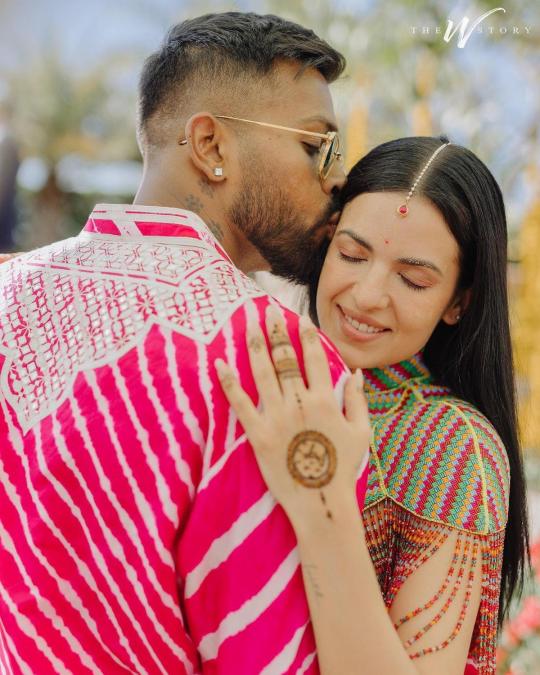
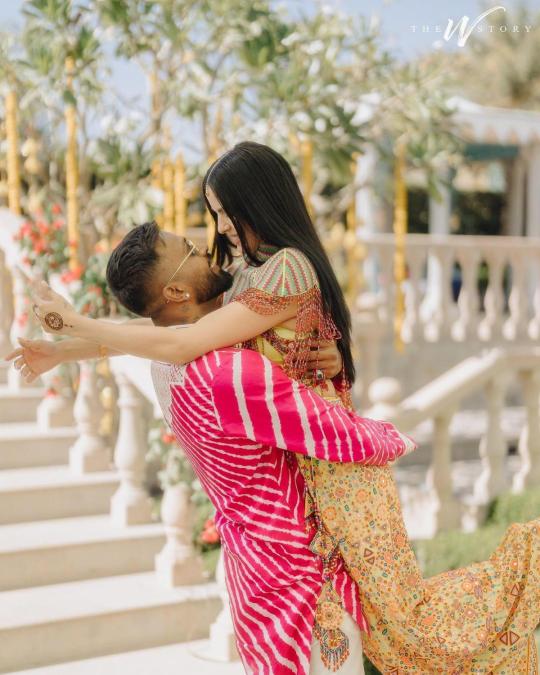
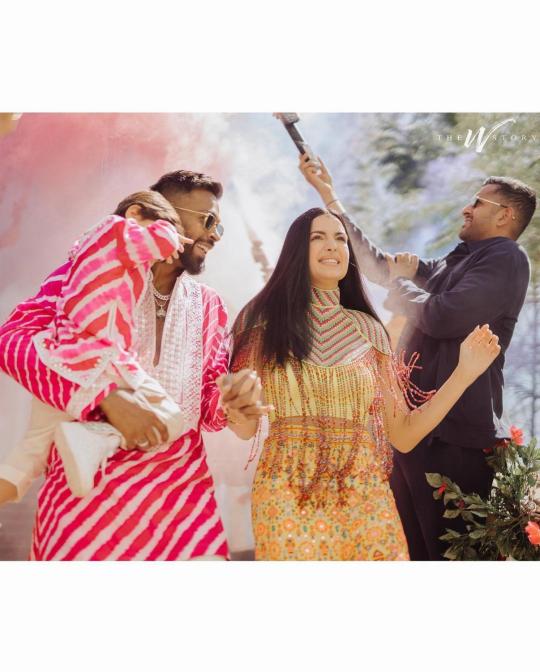
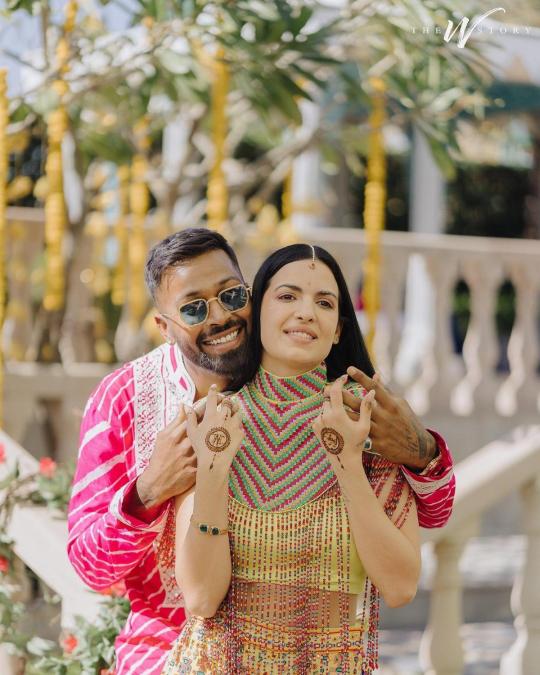
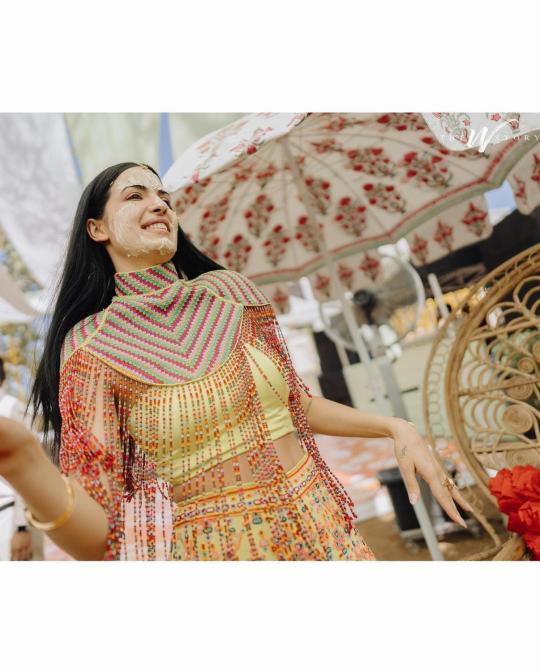
Hardik & Natasa’s Haldi & Mehendi Pictures Are Oozing Vibrant Hues
#hardik pandya haldi#cricketer hardik pandya#cricketer hardik haldi#haldi pictures#Haldi Ceremony#haldi trends#cricketer wedding#designer outfits#Designer wear#hardik and natasa#hardik pandya#hindu rituals#Haldi Photos#hardik haldi photo#hardik haldi pictures#haldi function#Hindu wedding#natasa stankovic#2023 celebrity weddings#abu jani sandeep khosla#abu jani sandeep khosla outfits#celeb weddings#Celebrity Weddings#celebrity weddings of 2023#weddings of 2023#Shaadiwish
0 notes
Text
The Story of Solah Shringar
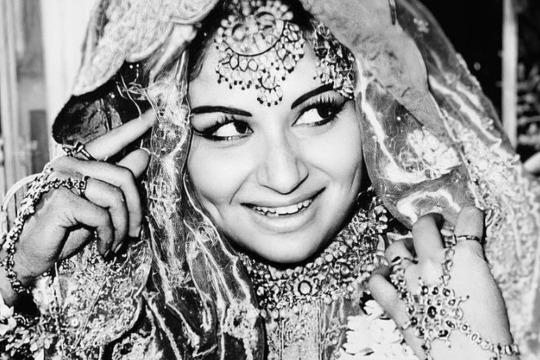
The Indian bride is the epitome of grace, elegance, and beauty. Her attire and traditional Indian bridal jewelry catch every eye and leave a lasting impression on everyone. While her wedding outfit accentuates her best features, her Indian bridal jewelry adds a subtle shine and a touch of sophistication to her entire look.
As per tradition, the Indian bride embellishes herself with 16 adornments on her wedding day. These adornments are called Solah Shringar. This ritual has been practiced since ancient times and is an integral part of bridal preparations.
The story behind the Solah Shringar features Rati, the wife of Kamdev, the Hindu god of love. Rati engaged in severe penance to appease Goddess Lakshmi. She was then blessed with the 16 adornments from Lakshmi and wore them to impress and marry Kamdev.

16 adornments (16 sringar)are
1. Sindoor
The first adornment is Sindoor, also known as kumkum or vermillion. Sindoor holds a special place as it marks the beginning of a woman’s new journey as a bride. Sindoor is applied by the groom on the forehead between the hair partition of the bride. The bride then continues to wear sindoor throughout her married life.
2. Hair care (Kesh Sringar):
We now focus on the ‘Kesh’, or hair. The Indian bride embellishes her hair using fragrant flowers and glittering headpieces. Traditionally, the bride made three braids that represented three holy rivers, Ganga, Yamuna, and Saraswati, and the trinity of the Hindu gods Brahma, Vishnu, and Mahesh. The fragrance of flowers keeps the bride fresh throughout the day and her Indian bridal jewelry embellishes her hairdo, adding another layer of elegance and beauty to her overall look.
3. Maangtika
The part of the forehead where the maangtika rests is believed to be the home of Ajna Chakra or the third eye. When the bride wears the piece of Indian bridal jewelry on her special day, she is believed to be connected with her third eye and has the ability to control her emotions and activate her knowledge, wisdom, courage, and willpower.
4. Bindi
The bindi also takes us to the third eye. Bindi comes from the Sanskrit word bindu, which means ‘point’ or ‘dot’. The bindi is closely associated with improving concentration and retaining energy. It is one of the most popular adornments worn by the Indian bride and is known internationally.

5.Kohl or Kajal
From the forehead, we move to the eyes. Kohl, kajal, surma, kanmashi, kaadige, kaatuka, and kan mai are some names for one of the oldest natural beauty products in the world. Kajal accentuates the eyes of the bride and is believed to ward off the evil eye in various cultures. The darkening around the eyes also protects the wearer from the harsh rays of the sun.
Kajal is an essential element of the solah shringar and makes the eyes look more prominent. It is undoubtedly a beautiful way to enhance the natural beauty of the bride.
6 .Karn Phool or Earrings
A wedding day look cannot be completed without a set of dangling earrings. Karn Phool is a Sanskrit term that translates to ‘flower of the ears’ and is an essential part of the solah shringar.
7 .Nath(nose ring)
The nose ring is another beautiful element of the Indian bride’s attire and is a symbol of valor, fertility, and spirituality. The large nose rings hooked onto the hair with a chain take the bride a step closer to creating her ideal look. It is one of the most ethnic elements of Indian bridal jewelry and a wedding day look is surely incomplete without it.
8 .Haar or Necklace
The one thing that brings the whole look together is the necklace. Necklaces are said to represent safety and abundance and are believed to help the wearer control their emotions better. Some necklaces feature specific motifs or gemstones that are believed to bring good luck and ward off evil spirits.
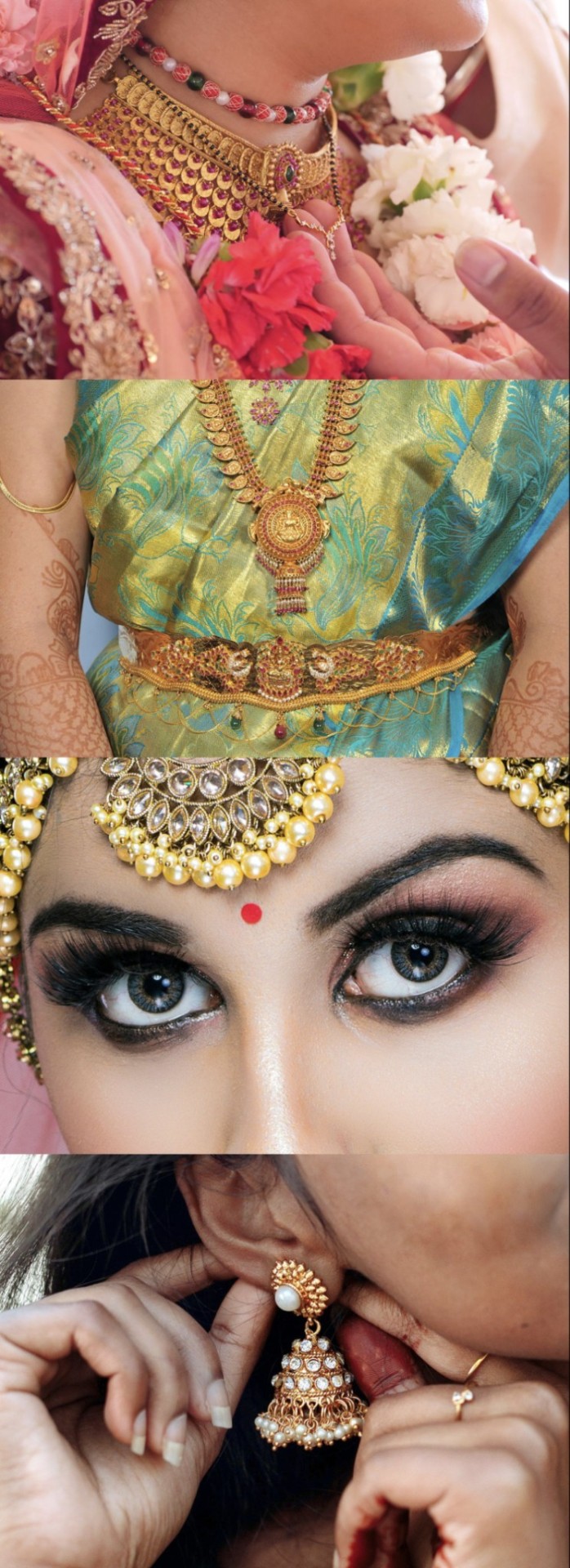
9 .Bajuband
This element of traditional Indian bridal jewelry is worn on the upper arm. The bajuband is believed to keep evil spirits away and protects the wearer. The Indian bride can embellish her wedding outfit with all sorts of armbands that are encrusted with diamonds and other colorful gemstones.
10 .Bangles, Bracelets, Choodiyan
Bangles and the Indian bride are inseparable. They’re a part of traditional Indian bridal jewelry that a woman always wears. It is believed that bangles and bracelets bring health, luck, and prosperity to the wearer and are more than a jewelry item or accessory for the traditional Indian woman. There are various wedding ceremonies related to bangles and bracelets across cultures that show us their significance in Indian culture.
11 .Hathphool and Aarsi
The hathphool is a clever mix of a bangle and a ring. Bringing the best of both together, this element of traditional Indian bridal jewelry embellishes the hand and wrist of the bride. The interesting crossover of the two pieces surely adds more flavor to the wedding day look.
A thumb ring known as Aarsi is also worn by some brides. Aarsi contains a small mirror. This mirror allows the bride to catch a glimpse of the groom since she is covered in a veil and cannot see the groom’s face.
12 . Mehndi
Henna, commonly known as mehndi, is undoubtedly one of the most amusing parts of a traditional Indian wedding. It is believed that mehndi brings good luck and joy to the bride. The darkness of the mehndi represents the strength of the bond between the bride and the groom. The solah shringar of the bride is incomplete without her hands and feet embellished with beautiful mehndi designs that add to her overall wedding day look.

13 . Kamarband (waist band)
The use of the kamarband, or waistband, is scarce in North Indian weddings but it is an important part of a South Indian bride’s trousseau. The piece of Indian bridal jewelry is adorned with gemstones and is used to accentuate the female’s body and keep her bridal saree in place.
14 . Anklets and Toe Rings
Commonly known as payal and bichhu, these elements of traditional Indian bridal jewelry embellish the feet of the bride. Payals can be recognized by the beautiful chime sounds they make whenever the bride walks. Toe rings are seen as a sign of marriage and a bride wears them until the death of her husband.
15 . Itar
Itar is the perfume that a bride applies to freshen her aura and stay fragrant throughout her special day.
16. Wedding Outfit
Finally, the one thing that clubs every element together and brings the bride’s imagination to life is the wedding outfit. The traditional Indian bride wore the classic red wedding outfit but with the evolution of Indian weddings, other colors have started to take center stage as well.
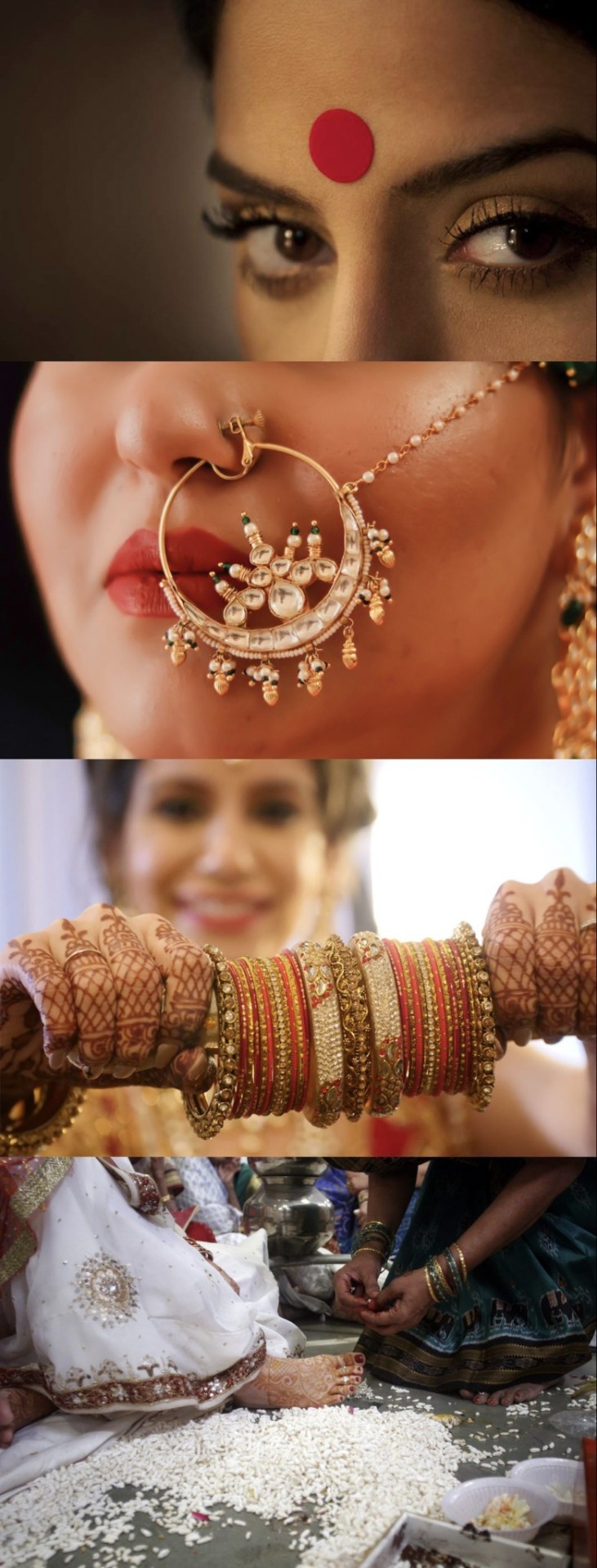
Source
#desiblr#16 adornments#16 sringar#desi girl#desi tumblr#being desi#desi tag#desi aesthetic#desi academia#desi#indian girl#indian wedding#indian culture#hindublr#hinduism#chakras#desi culture#beauty
35 notes
·
View notes
Text
Understanding The most Famous Hindu Wedding Traditions and Rituals
Experience the magic of Hindu weddings with Vaikunth! Our website makes booking a Vedik Pandit for traditional ceremonies seamless. From the vibrant Mehndi, adorning hands with henna, to the sacred Saptapadi, promising love in seven steps around a fire-Vaikunth brings ancient rituals to life.
Read more: - Understanding The most Famous Hindu Wedding Traditions and Rituals

1 note
·
View note
Text
Panchang
The first thing I learned in astrology was how to read the Panchang. It is a crucial aspect of astrology. A "Panchang" (also spelled "Panchanga" or "Panchangam") is a traditional Hindu calendar used in Indian astrology. It provides detailed information about the daily astronomical and astrological conditions and is used to determine auspicious times for various activities and rituals. A Panchang typically includes the following elements: Tithi: The lunar day, which is a phase of the moon. Each month has multiple Tithis, and they help determine the timing of festivals and religious observances. Vara: The day of the week, named after a specific planet. For example, Sunday is associated with the Sun, Monday with the Moon, and so on. Nakshatra: The lunar constellation or star that the moon is passing through on a given day. There are 27 Nakshatras, each with its own significance in astrology. Yoga: A combination of the positions of the Sun and Moon. There are 27 Yogas in a Panchang, and they influence the auspiciousness of the day. Karana: Half of a Tithi. There are 11 Karanas, and they are used to determine specific times for activities. The Panchang is used by Hindus for planning important events, such as weddings and religious ceremonies, ensuring they align with auspicious times according to astrological principles.
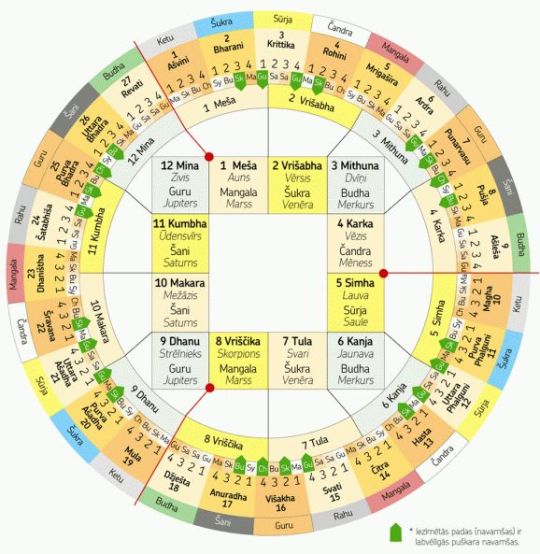
#vedic astrology#natal chart#astrology#astro tumblr#jyotish#astro posts#astro observations#astro notes
14 notes
·
View notes
Text
this is a really odd thing to consider with atla, but for a show that loves taking liberal scoops of hinduism, buddhism and south and east asian cultures for its worldbuilding, atla is really weird about letting its characters practice religion.
everything in atla is people taking about spirituality, defining themselves with spirituality, yet nobody engages it in the context of belief. we are given the concept of worshipped beings in the atla universe; tui and la and agni for example. but none of these gods are ever seen as gods that the characters hold belief in. we barely get a framework of belief with the earth kingdom (the earth kingdom is examined politically and never religiously in the series) which would actually be interesting because so many cultures did have a god or goddess of the earth. the water tribe goes into cultural rituals, but only for an episode. we know nothing about air nation religious practices beyond nonviolence bad and vegetarianism. even the fire nation is practically a blank slate.
it's almost like the creators were nervous at the idea of letting the characters practice a religion, even a created religion that's foreign to the majority of their (most likely christian) audience. the weddings are very christian-coded (you're telling me that the FIRE nation wouldn't have a hindu-style marriage which literally involves FIRE), and the characters are never seen worshipping or participating in cultural festivals beyond the usual 'oohh fireworks and food' type thing. normally i wouldn't care, speaking as a former kid who did spend religious festivals like that, but if you're going to put characters forward that practice eastern religions and then have them interact in the most surface level way possible, what's even the point?
#avatar the last airbender#atla#atla meta#cultural appropriation#religion in art#bryke#i guess this would be anti bryke?#religion#fire nation#earth kingdom#water tribe#air nation#worldbuilding
32 notes
·
View notes
Text
Dances of India

Dance is an ancient and celebrated cultural tradition in India. Folk dances abound all across the country, and huge crowds of people can be found dancing at festivals and weddings. Dance and song features heavily in Indian cinema (so-called “Bollywood” films), too. But where does Indian dance draw its roots from? Here are six of the most important classical dance forms of India.
Classical Dances of India
Odissi
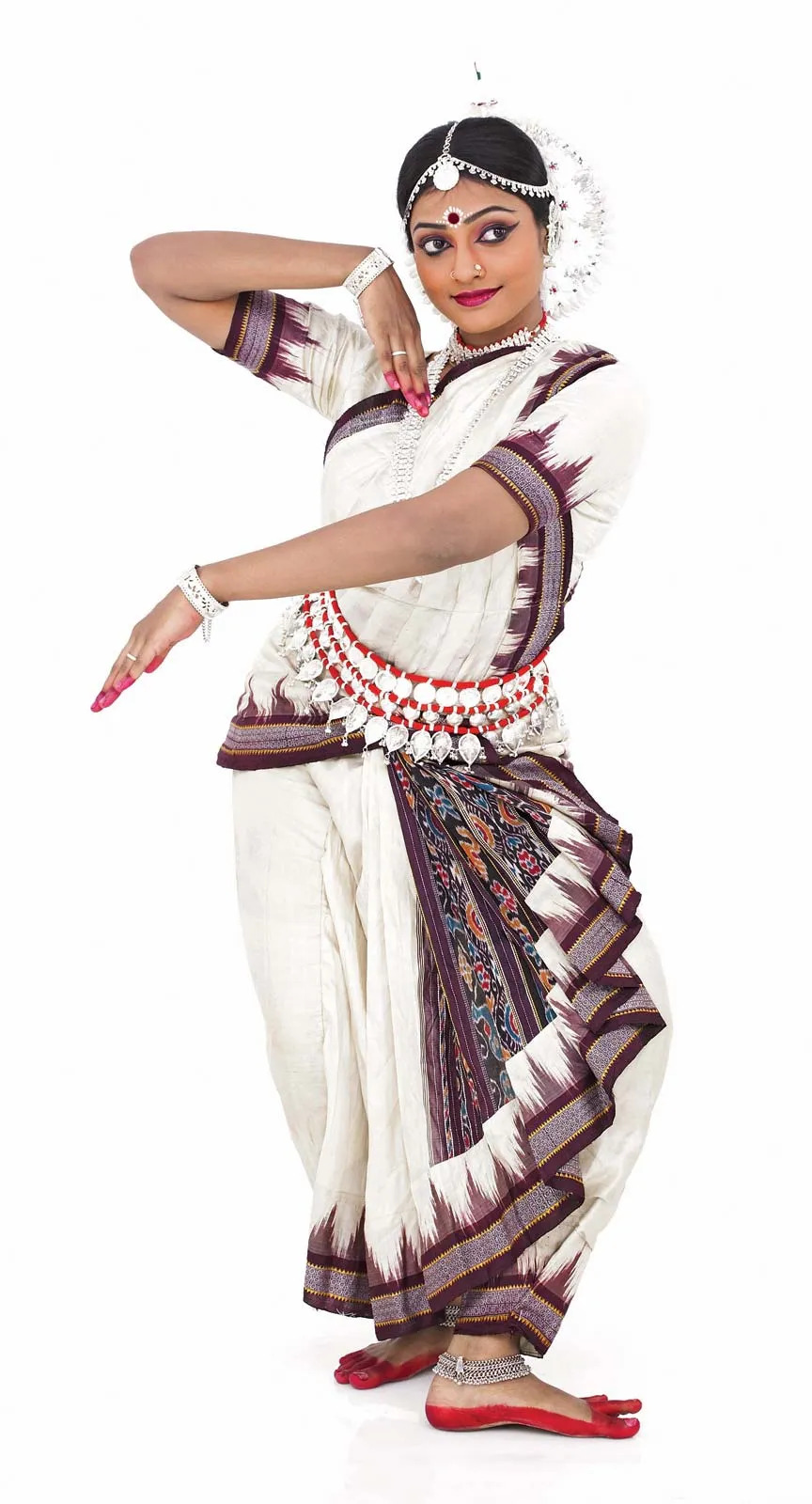
Dancer performing Indian classical odissi dance.
Odissi is indigenous to Orissa in eastern India. It is predominantly a dance for women, with postures that replicate those found in temple sculptures. Based on archaeological findings, odissi is belived to be the oldest of the surviving Indian classical dances. Odissi is a very complex and expressive dance, with over fifty mudras (symbolic hand gestures) commonly used.
Kuchipudi
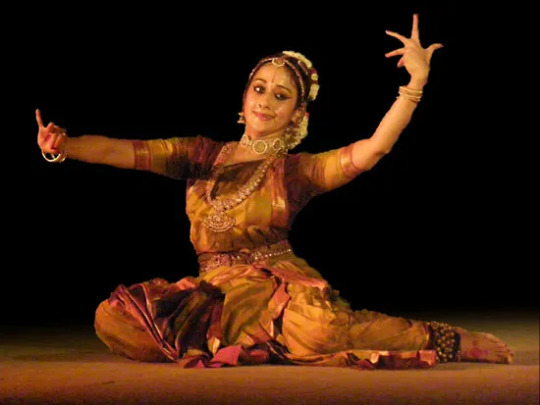
Kuchipudi performance.
Unlike the other styles mentioned, kuchipudi requires talent in both dancing and singing. This dance, from the state of Andhra Pradesh in southeastern India, is highly ritualized, with a formalized song-and-dance introduction, sprinkling of holy water, and burning of incense, along with invocations of goddesses. Traditionally the dance was performed by men, even the female roles, although now it is predominantly performed by women.
Manipuri

Manipuri-style performance of Indian classical dance.
Manipuri comes from Manipur in northeastern India. It has its roots in that state’s folk traditions and rituals, and often depicts scenes from the life of the god Krishna. Unlike some of the other, more rhythmic dances, Manipuri is characterized by smooth and graceful movements. Female roles are especially fluid in the arms and hands, while male roles tend to have more forceful movements. The dance may be accompanied by narrative chanting and choral singing.
Kathak

Kathak school dancer, in Mughal costume, performing Indian classical dance.
A dance of northern India, Kathak is often a dance of love. It is performed by both men and women. The movements include intricate footwork accented by bells worn around the ankles and stylized gestures adapted from normal body language. It was originated by Kathakas, professional storytellers who used a mixture of dance, song, and drama. Like other Indian dances it began as a temple dance, but soon moved into the courts of ruling houses.
Kathakali

Kathakali dance
Kathakali comes from southwestern India, around the state of Kerala. Like bharatanatyam, kathakali is a religious dance. It draws inspiration from the Ramayana and stories from Shaiva traditions. Kathakali is traditionally performed by boys and men, even for female roles. The costumes and makeup are especially elaborate, with faces made to look like painted masks and enormous headdresses.
Bharatanatyam

Bharatanatyam performance
Bharatanatyam is a dance of Tamil Nadu in southern India. It traces its origins back to the Natyashastra, an ancient treatise on theatre written by the mythic priest Bharata. Originally a temple dance for women, bharatanatyam often is used to express Hindu religious stories and devotions. It was not commonly seen on the public stage until the 20th century. The dance movements are characterized by bent legs, while feet keep rhythm. Hands may be used in a series of mudras, or symbolic hand gestures, to tell a story.
6 Classical Dances of India | Britannica
38 notes
·
View notes